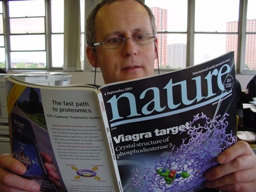 Editors should not talk about their organs too often, I always think; it makes them seem self-absorbed. However I will break the rule on this occasion because the issue is an aspect of a wider phenomenon touched on in this month’s second feature.
Editors should not talk about their organs too often, I always think; it makes them seem self-absorbed. However I will break the rule on this occasion because the issue is an aspect of a wider phenomenon touched on in this month’s second feature.
The information industry in general is in a state of flux, as the implications of digital storage and delivery work their way through the system. Removing our reliance on printed paper for these functions will have consequences every bit as unforeseeable as the introduction of word processing in the 1980s, when for writers and editors, ‘top copy’ tyranny finally collapsed. However, what digitisation is forcing us to do is to be more discriminating about different types of information, and how best to deliver them - making the medium fit the message, in other words.
Like Radio Times, Geoscientist (formed by the amalgamation of the Institution of Geologist’s magazine British Geologist and the Society’s monthly newsletter) was for many years after primarily a ‘listings’ service - a directory of meetings, with abstracts. This sort of information is now much better delivered online than in print, because there it can be continually updated and disseminated, free and on-demand. As a result, the printed Calendar has shrunk to a vestigial page, listing only meetings in the month of issue.
Much the same sort of transformation is now overtaking news. Even daily newspapers now find their thunder regularly stolen by more immediate media, which now include their own online versions. Print dailies face many of the same problems that Sundays always faced; when everyone else has shorter lead times and higher frequency, you must do more opinion, more reviews and perhaps the odd investigative exclusive.
We are all now bombarded with geological news, so a magazine with a lead of at least one calendar month is not the natural home for breaking stories. So, marking another stage in a transition to a less news-based, more reflective Geoscientist, we shall henceforth publish two spreads of reviews in our section ‘Books & Arts’. This will help both to cut the lead-time for reviews and broaden the range of books and events that we cover.
This new world of information delivery is central to our second feature this month, in which Map Librarian Paul Johnson reviews the history of the Society’s map collection, and the digital future that awaits it. And if you would like to review a book for Geoscientist, please use the Geoscientist Online Books & Arts page for a regularly updated list of available titles.